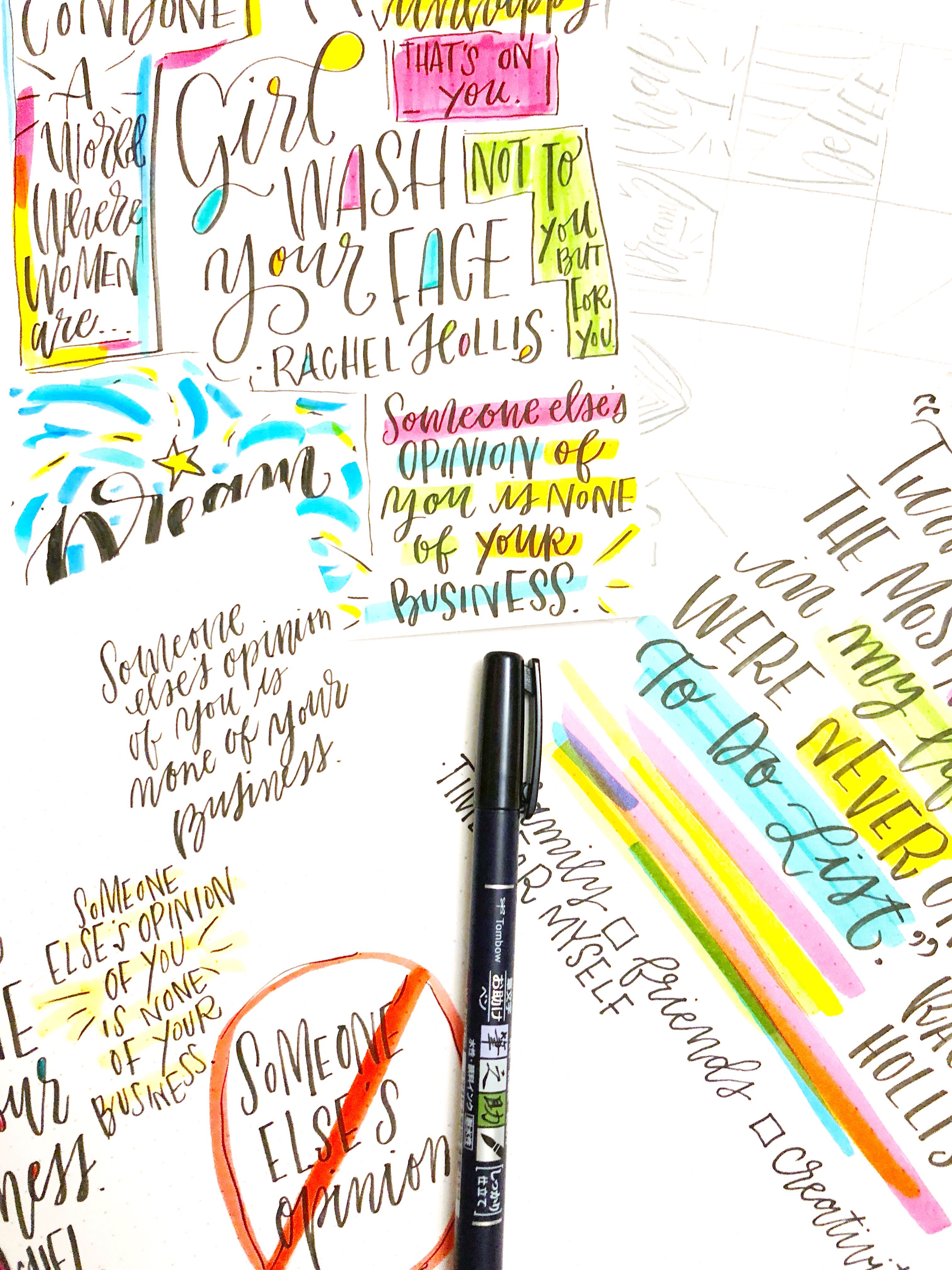
Audio books can make it super simple to practice lettering, have a good doodle, and get inspired with words and ideas at the same time. It’s Lauren of Renmade Calligraphy and over the past year, I have really gotten in to listening to audio books while traveling, practicing lettering, and doing really any kind of task.
While at times it can be more ideal to hold a tangible book (I mean, let’s face it… those margins are just screaming for a good doodle and a little color), it can be so much more productive sometimes to listen instead of reading. If you find yourself reading a super inspirational book with lots of little nuggets of knowledge, advice, or quotes, that would be the perfect book to listen to.
The best way to listen with intention (in my opinion) is to doodle or letter what you hear. I have always been the girl with doodles and letters all over my notes in classes or meetings. The best way for me to process ideas is to create, making them more concrete, while also adding color.
Lets go through 5 different techniques of how to letter and doodle your way through a good read (or shall we say… listen), all while using my favorite Tombow USA supplies, of course!
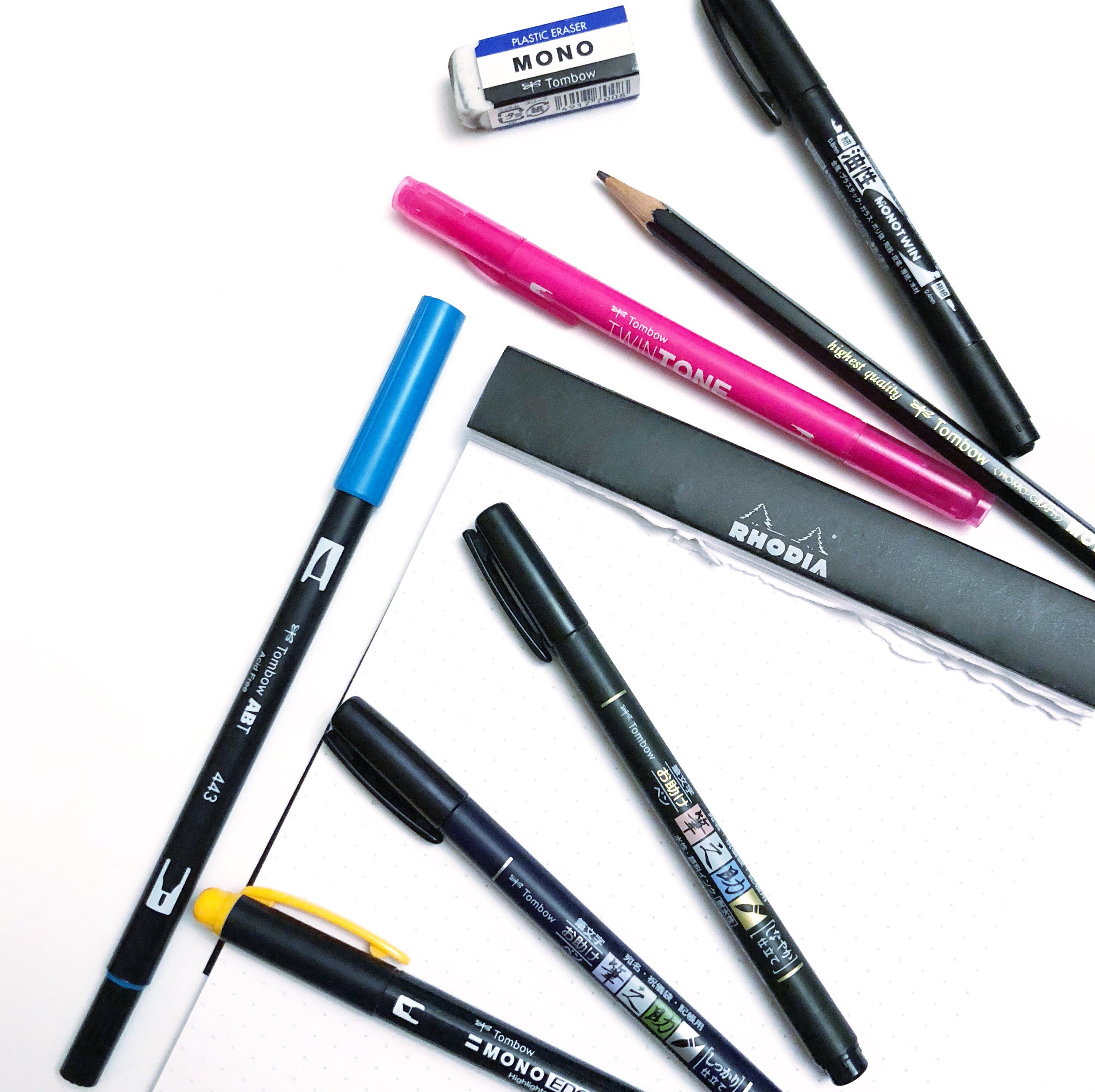
WHAT YOU’LL NEED
It’s simply no secret that Tombow USA has the best lettering supplies around and that’s why so many Tombow tools are on ideal for letterers (check out the complete list of my favorite supplies on my website, here). For this specific project you will need:
- A Rhodia Dot Pad (or any smooth paper)
- Tombow Lettering Tools
These lettering supplies are my favorites and the ideal tools for creating effortless lettering while listening to a book. You’ll also need to get yourself interested in a good audio book. I’ve been completely loving “Girl, Wash Your Face” by Rachel Hollis on Audible lately. There are also many podcasts that these techniques will also work well with.
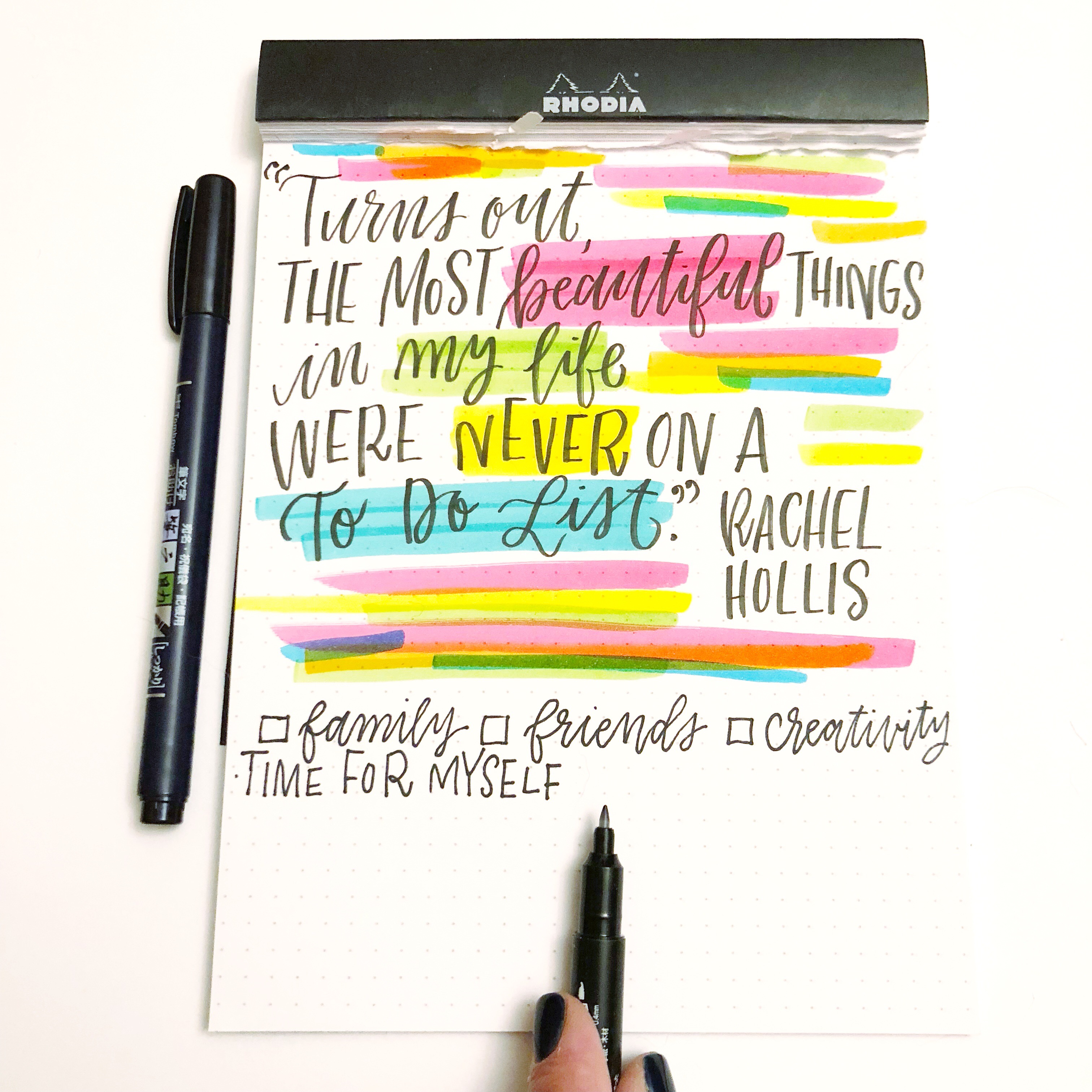
1. MAKE LISTS
The Rhodia Dot Pad is just perfect for lettering a variety of layouts and ideas on. Start by lettering out a quote with a Tombow Fudenosuke Hard Tip Brush Pen that has meaning or can accompany a personalized list that connects your life and ideas with what you are reading. The Tombow MONO Twin Permanent Marker is the perfect tool for creating small and precise lettered lists on the bottom of the page. Create little bullets or check boxes with the fine tip to add interest and organization to your list. List quotes, ideas, or words that stick out to you.
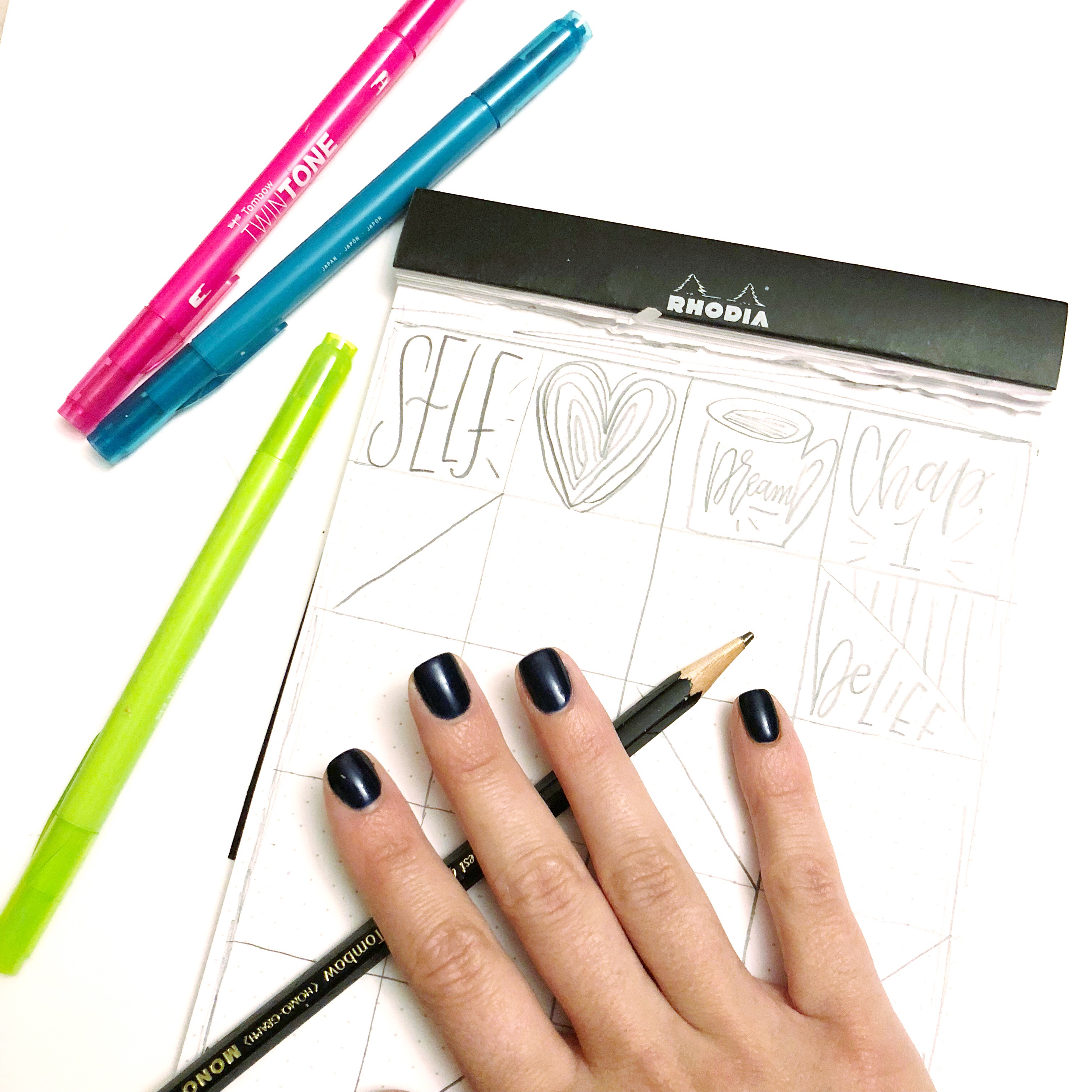
2. DOODLE BOXES
Doodle boxes are very similar to lists but less structured. If you are listening to a deep part of a book or a narrative that is more complex, this is a great way to keep interest while not having to focus a great deal on what you are creating.
Sketch out squares using a Tombow MONO Drawing Pencil (I used 2B) from the set. Then sketch doodles, words, and ideas that surface throughout the book into the boxes. You could cover a sheet with simple doodles for each chapter or do a more intricate and detailed box for bigger sections of the book. Add some color to your sketches with the Tombow Twin Tone Markers or Tombow MONO Edge Highlighters. You can also just keep the pencil sketches raw. The options are endless.
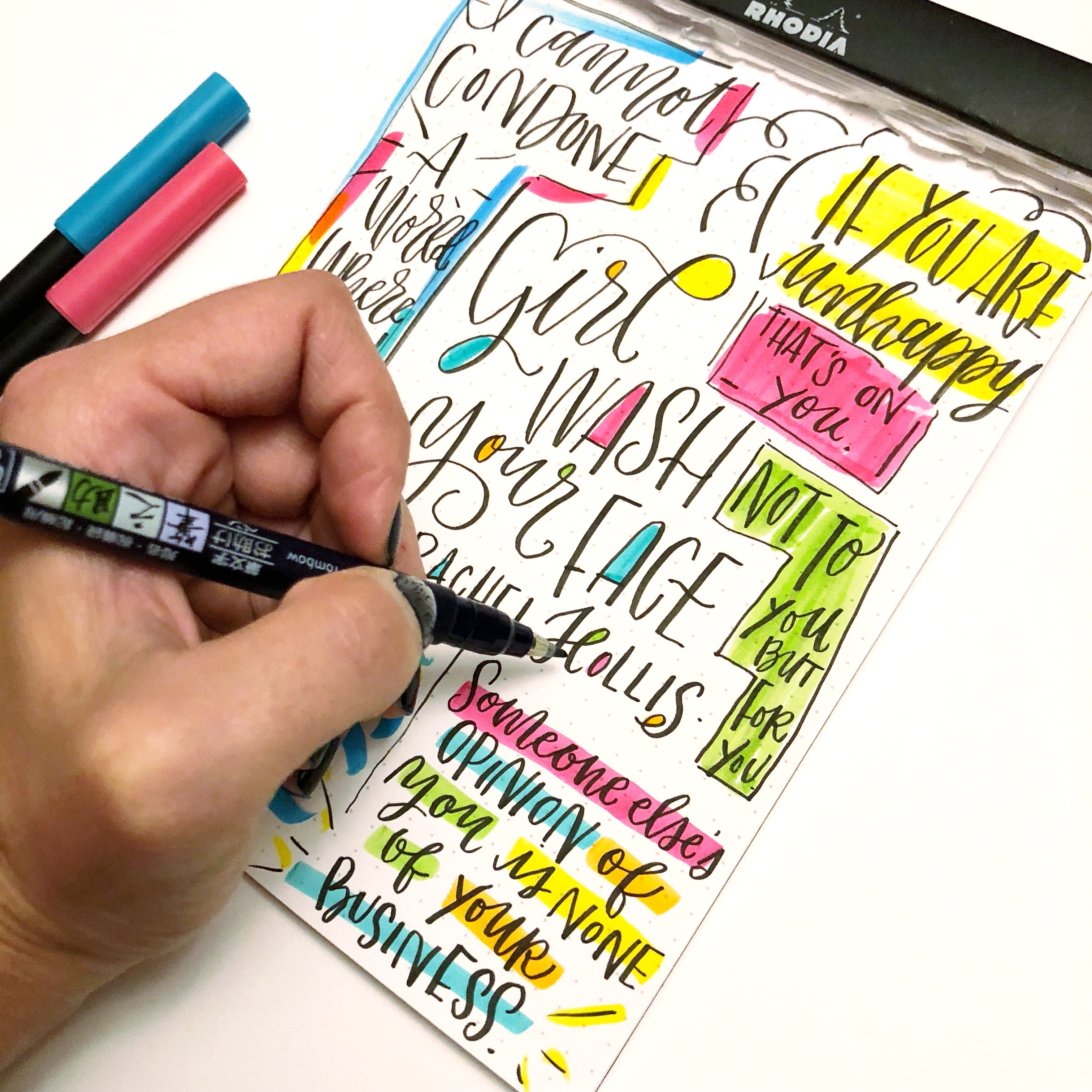
3. SKETCH NOTES
My favorite way to listen and create is through sketch notes. The Tombow Fudenosuke Hard Tip and Soft Tip Brush Pens are the best for quickly writing down ideas as I hear them. Then I love to add some color with my trusty Tombow Dual Brush Pens. Simply highlight random colors or color code ideas into categories. Even coloring in random shapes made by the letters can add interest to quickly lettered words.
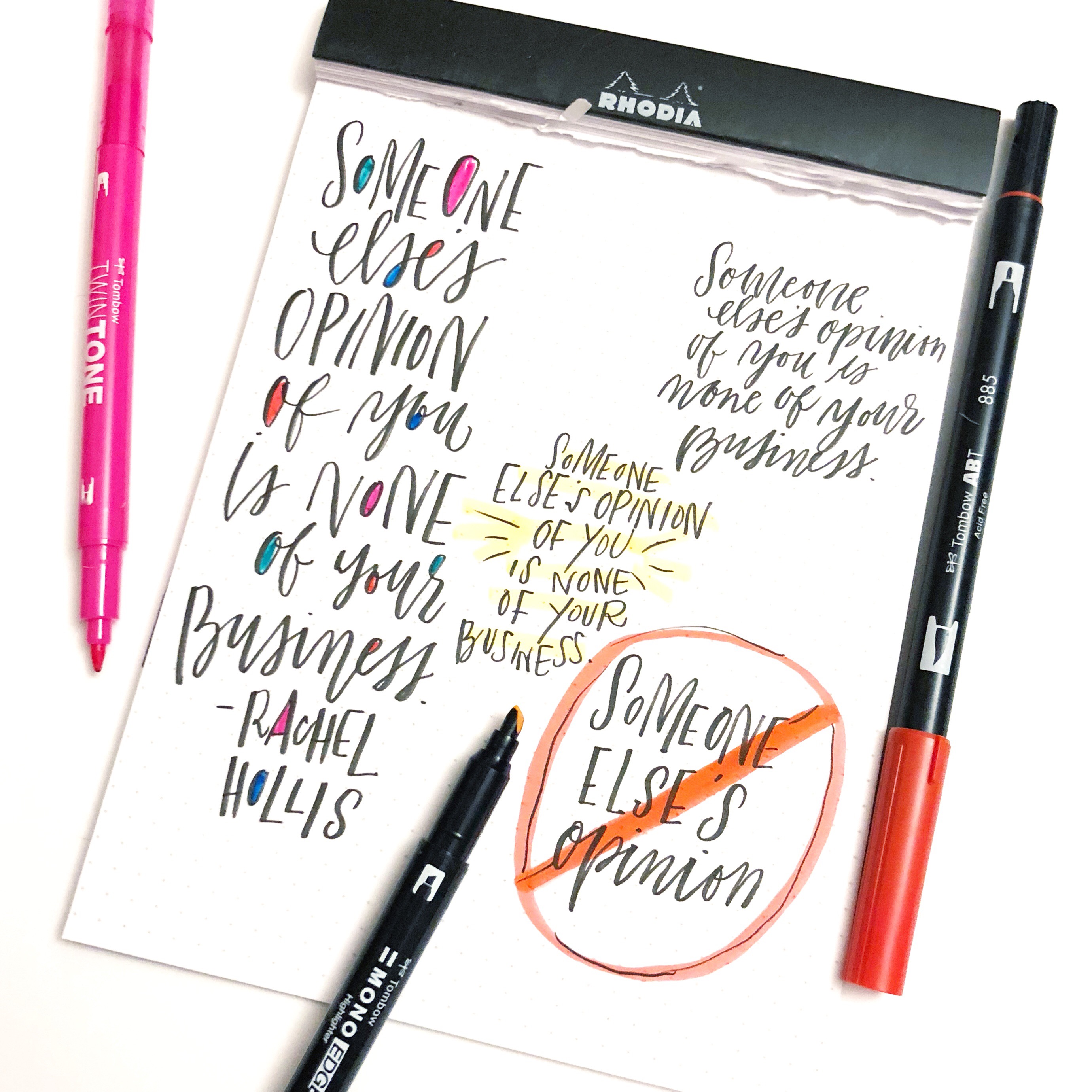
4. ONE QUOTE MANY WAYS
Sometimes a quote really sticks in your head. It can be relaxing and inspiring to cover an entire page with the same quote lettered in different ways. Letter using different tools in a variety of colors, styles, and sizes. The more ways that a quote can be written, the more you will grow creatively. I have always found that I improve and feel more creative when I invest the time in practicing and trying new things. An exercise like this is perfect for helping one get out of a creative rut.
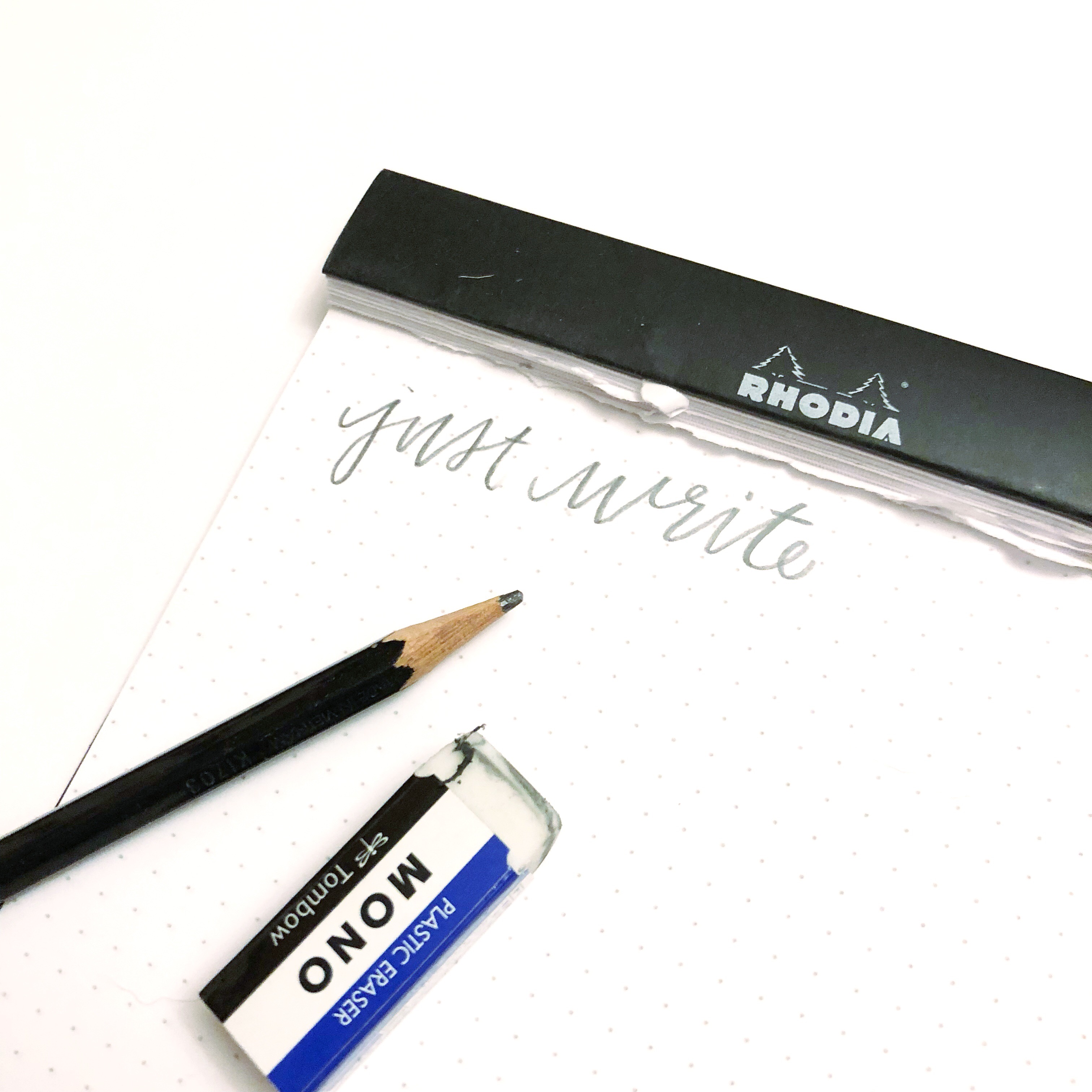
5. JUST WRITE
The last technique is pretty simple: pick any lettering tool and just write whatever you hear and have time to write down. Whether it’s complete thoughts or simple words, quickly jotting down words can help with practicing a specific style more consistently. So pick up your Tombow MONO Drawing Pencil, or whatever tool you want more practice with, and start writing what you hear.
Challenge yourself to think outside of the book and create lettering that inspires you to create and grow because of the words you are gifted by the author of whatever you listen to.
Happy Lettering!
Thanks for sharing such a valuable content. How long have you been writing? Keep it up!